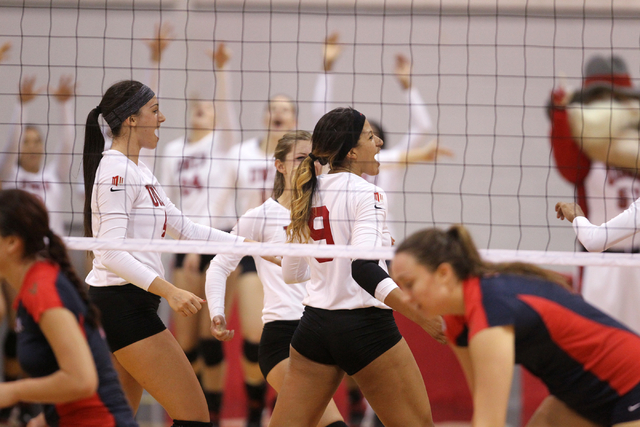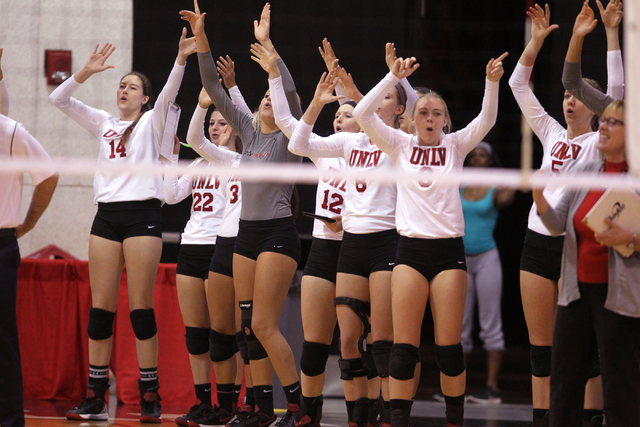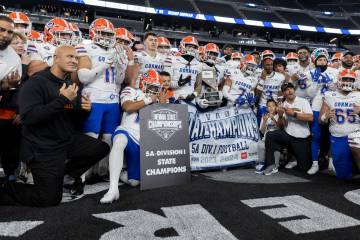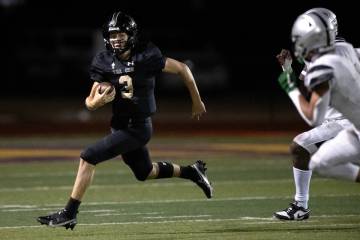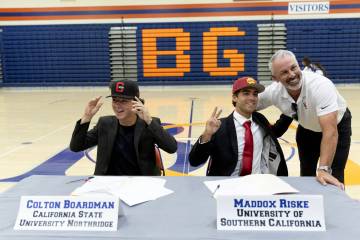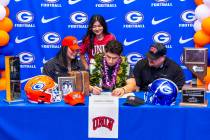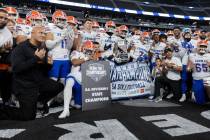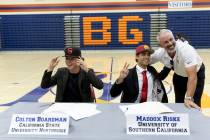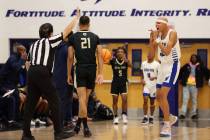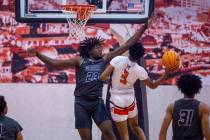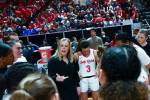Recruiting Game: Gender equity issues challenge UNLV administrator
Women make up 59 percent of the UNLV student body. That statistic presents a special challenge for Lisa Kelleher, who is in charge of Title IX compliance for UNLV’s 10 women’s sports programs.
Title IX, which was enacted in 1972, bans sex discrimination in any educational program receiving federal funding. The main requirement for a school to be in compliance with the law is that it provides participation opportunities for female and male student-athletes that are proportionate to their respective rates of enrollment.
“Our campus is 59 percent women, so we’re supposed to be close to 59 percent women athletes,” said Kelleher, UNLV’s senior woman administrator and associate athletic director. “We’re at about 55 (percent), so we’ve got two choices: add more women or subtract more men. It’s a math game.”
Since 1972, schools have strived to achieve equity by cutting many men’s college sports programs, most notably wrestling, and adding many women’s programs, most notably soccer.
To comply with the law, UNLV cut wrestling and men’s track in the 1980s before bringing back women’s volleyball in 1996 and adding women’s soccer in 1998 and women’s golf in 2001.
“The campus keeps growing toward females,” Kelleher said. “The main thing is that participants match the campus.”
From 1972 to 2011, the number of girls competing in high school sports in the U.S. skyrocketed from less than 295,000 to 3.2 million. Likewise, the number of female athletes competing at NCAA schools increased from less than 30,000 in 1972 — when athletic scholarships for women were virtually nonexistent — to almost 200,000 in 2011, when many of them were on scholarship.
Football — usually a university’s most lucrative sport — presents the biggest challenge to proportionality, as there is no equivalent women’s sport that has 105 participants (85 scholarship players and 20 walk-ons).
In fact, Kelleher said, three women’s sports combined — indoor track (40 participants), outdoor track (40) and cross country (30) — are needed to essentially comprise the equivalent sport to football. And that’s only by using some creative math. For example, UNLV athlete Lindy Eskin counts for three participants, as the Green Valley High School product competes in cross country and indoor and outdoor track.
While Title IX has led to a more than 600 percent increase in scholarships for women, it has led to fewer scholarships for men in equivalency sports such as baseball, which at the NCAA Division I level only has 11.7 scholarships to divide among 27 players. Baseball players have to settle for partial scholarships, a minimum of 25 percent.
“Nobody gets a full scholarship. You have to split them all up,” Rebels coach Stan Stolte said. “You’re kind of part bookkeeper and part evaluator. You’ve just got to put a price tag on a kid. You can’t just say ‘full ride,’ like some other sports.”
Football and men’s basketball are considered head count sports, which means each player receives a full scholarship. To help achieve equity, the NCAA allows 15 scholarships for women’s basketball and 13 for men’s basketball. Likewise, women’s tennis has six scholarships, while men’s tennis has 4.5 scholarships to split among its 10 players.
As is the case with participation opportunities, female and male student-athletes must receive athletics scholarship dollars proportional to their participation. Otherwise, males and females must receive equitable “treatment” and “benefits,” not equal money spent on each sport.
For example, a male football player needs protective equipment such as pads and a helmet, and a female soccer player needs shin guards. Title IX allows for a difference in the cost of the equipment as long as both players receive the same quality of equipment.
Title IX requires the equitable treatment of female and male student-athletes in 11 provisions: equipment and supplies; scheduling of games and practice times; travel and daily allowance/per diem; access to tutoring; coaching; locker rooms, practice and competitive facilities; medical and training facilities and services; housing and dining facilities and services; publicity and promotions; support services; and recruitment of student-athletes.
“Under recruiting, my biggest concern is the ability for my female coaches to go out and recruit to the equivalent of our male coaches,” Kelleher said. “We have to make sure women’s coaches get the same per diem as the guys get and stay at comparable places.”
Concerning travel, the UNLV men’s golf coaches take some recruiting trips on chartered airplanes provided by local casino owners, but women’s golf coach Amy Bush-Herzer said she’s content to fly commercial.
“She couldn’t care less about (charters),” Kelleher said. “She likes going to the airport and getting on Southwest and not having to go to the (Henderson) Executive Airport. We had her sign a letter that, from a recruiting standpoint, she and her student-athletes are fine with that.”
As for practice facilities such as the Mendenhall Center, which was built primarily for the men’s basketball team, the Title IX requirement is met because the UNLV women’s basketball and volleyball teams also train there.
“Whenever you do those (facilities), from a recruiting standpoint, you’re not going to have an equity issue … as long as you provide similar or the same services to our women athletes,” Kelleher said. “It might be in a different place and look different, but they have the same opportunity.”
Likewise, when recruits make their official visits to UNLV, Kelleher said she has to ensure that all of the prospective student-athletes have comparable choices for entertainment and meals.
If men’s basketball recruits ride the High Roller, women recruits should be able to ride it. If a female recruit wants a salad and a male recruit opts for a more expensive steak dinner, Kelleher said, the Title IX requirement has been met because they both got what they wanted.
“That’s why you don’t say equal,” she said. “You say equitable.”
Contact reporter Todd Dewey at tdewey@reviewjournal.com or 702-383-0354. Follow him on Twitter: @tdewey33



